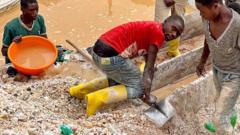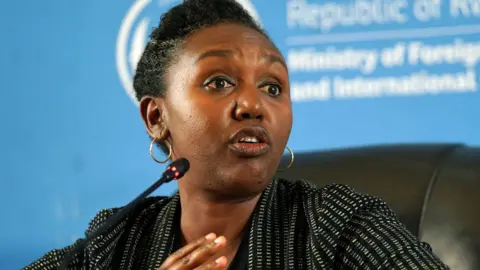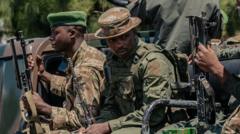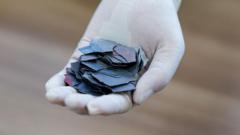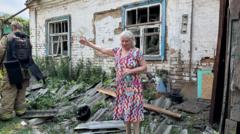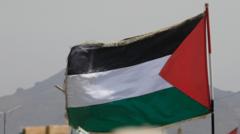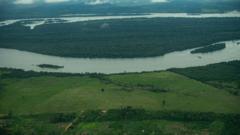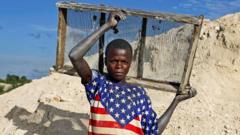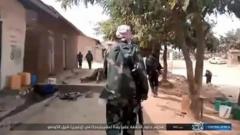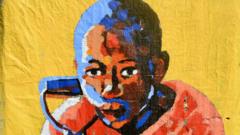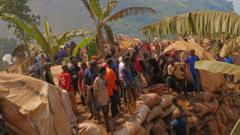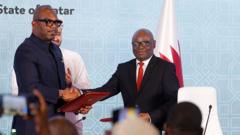At the Rubaya mine in North Kivu province of the Democratic Republic of Congo, life unfolds amid a tapestry of toil, danger, and a struggling economy. Recently, M23 rebels granted a rare opportunity for BBC journalists to access this site, pivotal for the global mobile phone industry, where coltan is extracted. The expansive mine employs over 10,000 people, all engaged in various stages of coltan extraction with no visible idleness.
The miners—men and women alike—work tirelessly amidst rudimentary conditions. Some dig deep into the earth with shovels while others carry heavy sacks of ore on their backs to assembly points for further processing. The site, nestled within the lush Masisi Hills, represents a wealth of resources, accounting for about 15% of the world’s coltan supply, making it a focal point for local and international interests.
"We usually have more than 10,000 or more people working here daily," says Patrice Musafiri, the site supervisor since the rebels took control in April 2022. The landscape is treacherous, and extraction conditions are challenging, with miners facing high temperatures and exposure to harmful gases. Yet for many, such labor is a necessary means of survival. "Mining has really helped me," shares Peter Osiasi, a miner who has saved enough money to start a family.
Despite the perilous nature of the work, conditions at the mine have reportedly improved since M23 took control. Musafiri noted that security has been established, allowing workers to operate without the threat of armed men onsite. The militaristic structure governing these efforts remains complex, however. The M23, largely associated with ethnic Tutsis, has been embroiled in accusations of external support and has largely evaded disarmament agreements involving various factions and nations.
While local inhabitants manage to create a semblance of a stable living with the minerals extracted, minuscule pay continues to be a concern. Local miners report receiving minimal financial compensation for their arduous labor, which raises questions about the economic benefits trickling down to these communities. It is estimated that M23 profits significantly from taxing coltan, with a portion of the revenue allegedly funneled to Rwanda, although both parties deny involvement.
The intersection of international interests and local realities highlights the precarious situation in which these miners find themselves. U.S. investments could influence the future of mining in this war-torn province, bringing hope for infrastructure development, including schools and healthcare. Local leaders are wary but optimistic about foreign investments that could elevate wage levels and improve living conditions.
Even though peace discussions, including those brokered by the U.S. and Qatar, are underway, uncertainty looms as the M23 continues to control significant territories in Eastern DRC. The ongoing hope of miners like Osiasi is clear: “I appeal to our leaders to maintain peace and also to the mine owners to increase our pay, as it’s very little.” The call for peace, security, and fairness encapsulates the underlying needs of those risking their lives beneath the earth's surface for its hidden treasures, painting a vivid picture of resilience amidst adversity.

